The great war, generally known as the first world war, was between the world’s two leading powers, the Central Power and the Allied Powers. It began in 1914 and lasted until 1918.
The Central power was the alliance of Germany, Austria-Hungary, Turkey, and Bulgaria. Similarly, France, Britain, the United States, Japan, Italy, and Russia united to become the Allied power.
The Allied powers group was more potent in comparison to the Central power. It had a considerable population, significant military mobilization, more extensive access to arms and ammunition.
Britain was the leading allied power, whereas Germany stood ahead of all central forces.
Who won World War 1?
Content
The Allied Powers won World War 1 causing about 8.5 million death casualties.
What is the Versailles Treaty?
Versailles Treaty is the peace document signed by the Allied and the Central powers after World War 1.
When is Remembrance Day?
On November 11, Remembrance Day is observed when everyone wears a red poppy to remember those who died in the conflict.
10. Great Britain
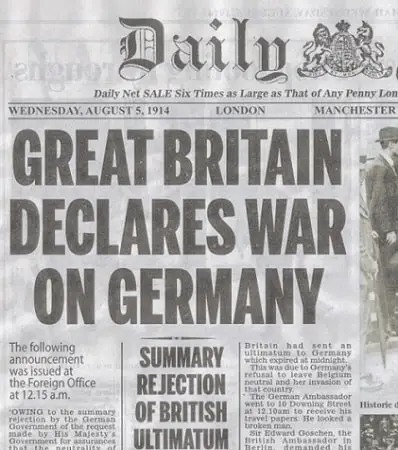
Britain was one of the strongest empires during the 1800s and 1900s. It had almost 57 colonies, protectorates, vast human resources, a prosperous economy, and dominions from India, Canada, Australia, and North Africa.
Britain was the home of great inventions of the age. It was ahead of Germany and the U.S. in terms of technology.
The development of steam engines revolutionized trade and transport in the 1700s.
Trade was made convenient through the waterways connected to significant colonies like India. The Royal Navy was the most incredible naval power on earth.
Foreign trade domination was matched by the vast navy forces Britain had employed. Likewise, Britain had massive military troops mobilized during the war.
After the colonization, its armies grew and were developed into fighting forces. It had established the Territorial forces and the Special Reserve.
The power contained about 250,000 Territorials and 200,000 Reservists, counted to over 700,000 military troops. However, the war suppressed the armed forces since more than 800,000 soldiers lost their lives.
9. Germany
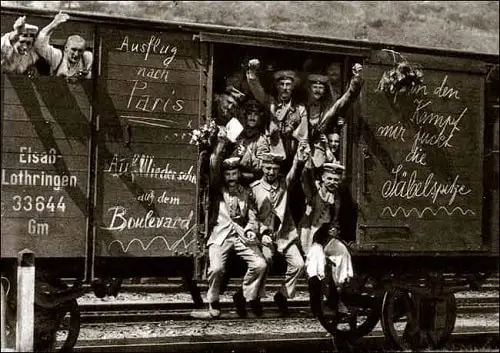
Germany entered the war as a well-built contender. It had access to a large army accompanied by powerful ammunition.
It employed about 3,822,450 military men, making it the second-largest military. They owned 22 per-dreadnought battleships, nine armored cruisers, 28 submarines, and four battlecruisers. They also gathered about 6000 police officers along with 7800 indigenous.
Germany was a new nation formed by the unification of several. German-speaking countries in the 1800s.
Later on, it harbored its economy mainly through coal production. Likewise, railways, iron ore mining, and foreign investments boosted economic growth.
The unification played a significant role in cutting off tariffs and trade taxes. The progression in industries was able to meet the needs of a rapidly growing population.
Before the unification, about 41 million people resided in Germany, summing up to 67 million by 1914. Steel production engaged people in steel production; however, agriculture could not prosper much.
But that did not disappoint the wealth of the nation. Even banking flourished well and provided people with credits for investments.
It had even colonized parts of African countries, including Congo, Tanzania, Namibia, and numerous West Pacific islands. Despite all the advancements, Germans were eager to summon the world powers.
It also led to the path for the breakaway of a dreadful war where it had to face almost 1,773,700 casualties as per a summary of World War 1 casualties compiled by the U.S. broadcasting service.
8. Russia
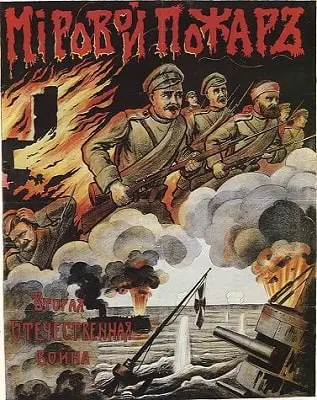
With a wide span covering a whole of northern Asia and eastern Europe, the nation exhibited itself in world war 1 as an allied power group.
Although Russia had no personal motives for participation in the war but to keep the promises kept to Serbia.
The Russian army was regarded as the most significant troops at that time. It was believed to have 5,971,000 men equipped with 7,100 guns, 250 heavy guns, and 540 field howitzers.
Modern weapons, including machine guns and rifles, were also in development. Russia had quite a considerable population that needed good economic support.
The nation had its best at metallurgy, especially steel production and iron mining, just like any European country.
In addition to it, the expansion of the railway network’s heavy engineering advancements helped boost the economy.
Agriculture was a significant economic activity to feed its people. Likewise, industrialization had also peaked, rising to 21.5% by 1913A.D.
However, the consecutive wars later deteriorated the financial status, but it has again returned to its initial position.
The mistakes of Soviet Russia and the Bolshevik party caused countless deaths making Russia the country with the most death casualties about 1,700,000 people.
7. France
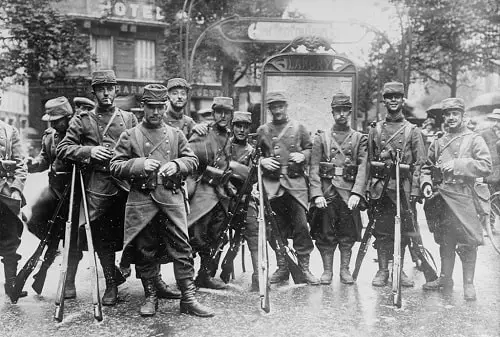
France had grouped up with the Allied powers as Germany left it with no alternative. As a matter of self-defense, it had to get involved in the world war. But it was in a better state to combat its rivalries.
Before the war started in 1914, France was undergoing an industrial revolution. Most of its farmers had left for cities with factories and heavy industries.
Railways’ expansion took a massive advancement along with trade and exports. Thus, French people refer to the Belle Epoque as or beautiful era.
Before the war, this region generated 75% of the French coal, 81% of the iron, 63% of the steel, 85% of the linen, 94% of the wool, and 75% of the sugar.
People had upgraded their living standards. Modernization gave rise to new goods, automobiles, telegraph, etc. Hence, France was considered economically stable.
France had an advantage of a controlling government that was on good terms with frontier warfare. By August 1914, France had collected 1,300,000 men.
Later on, it called up 8,817,000 men in its Armed forces, including colonial troops. The Lebel was a standard rifle used by the French army, Berthier, Mannlicher-Carcano, Springfield, etc., and some machine guns.
They also had a slight advantage over internal lines of communication; it was easier for them to move troops quickly than for the Germans, whose approach was over longer distances and more difficult countries.
The French army lost around 6 million casualties, with 1.4 million deaths and 4.2 million wounded.
6. The United States
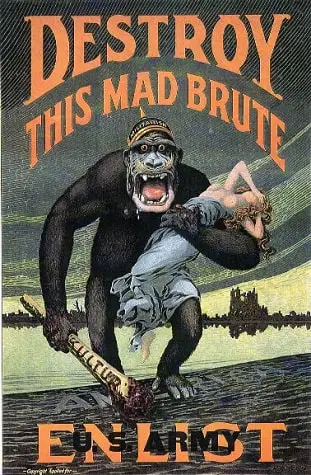
The United States remained neutral during the initial days of the war as individuals supported one or the other groups. Later on, it entered the war after attacks on other neutral nations like Belgium as atrocity propaganda spread.
The United States, a powerful country when declared to join the fight in 1817 A.D., favored allies due to other armies and weapons.
It had over 4.7 million people recruited as armed forces. Sixty-six thousand men worked in the U.S. Navy. It proved to be a great benefit in hurting Germany economically by imposing a blockade.
Some troops sent to Europe were called the American Expeditionary Forces (AEF). Upon entering the war, Americans started inventing war tanks.
According to historians Joel Vilensky and Pandy Sinish, “By the end of World War 1, more than 10% of all chemists in the United States were directly involved in chemical warfare research.”
The economic status was blooming as it had started exporting goods to most European countries at war. They produced cotton, wheat, brass, rubber, automobiles, machinery, and many other raw materials.
Thus, the economy rose to $1.6 billion in 1916 from $480 million in 1913. Similarly, food exports also inclined $190 million to $510 million in that same period.
The unemployment rate declined from 16.4% in 1914 to 6.3% in 1916 as people were busy producing war aids like poisonous gasses, airplanes, gunpowder, etc. The U.S was indeed a strong contender of the era.
The death toll surged to 416,800 for military personnel and 418,500 total civilians.
5. Belgium
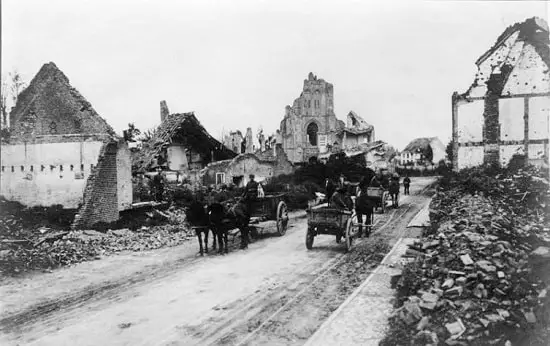
Belgium had also stated its neutral policy during the war but was attacked by Germany. Thus, it became involved actively on August 4, 1914.
The German treated Belgian civilians tragically. A total of 320,000 men served in the Belgian armed forces. They had little access to modern arms, limited to 120 machine guns.
However, the government created the Belgian Air Force equipped with 16 Maurice Farman biplanes, two small airships, and four observation balloons.
Belgium founded its national reserve, known as Belgium’s National Bank. It was the reserve for gold, silver, and guaranteed banknotes, forming the pillars of the financial system.
It was in a well-to-do situation financially before the war broke out.
4. Austria-Hungary

The war’s root cause was the assassination of Archduke Franz Ferdinand and his wife by a Serbian assassin in Sarajevo.
On July 28, 1914, Austria-Hungary began by declaring war on Serbia. Austria had 40,000 men, followed by 30,000 Hungarian soldiers and the Imperial and the Royal troops.
They could fight on four fronts, but internal clashes caused problems. Unlike other European countries, the Austria-Hungarian empire had a low economy due to instability during the Dual Monarchy’s regime.
But they had a strong food and agricultural background. Austria could export many products to Europe through Budapest, a predominant Hungarian center.
In addition to it, they even had full support from the central powers. They had to face the loss of a total of 385,000 deaths.
3. The Ottoman Empire
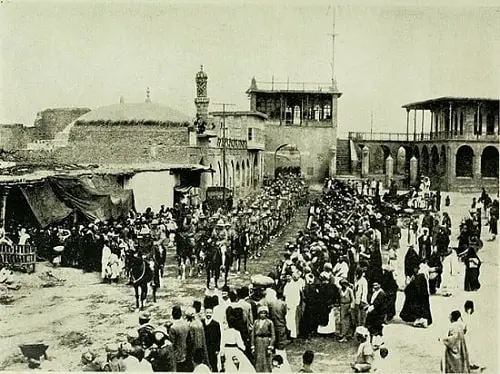
The Ottoman Empire was strong globally, today’s Turkey. It covered the Middle East, Eastern Europe, and North Africa. The empire was predominantly based on agriculture.
It also exported luxury items and had a good grasp of the cotton trade. People also earned their living by small initiatives contributing to enhancing the economy.
They were advanced in medicines and introduced surgical inventions, forceps, and scalpels that are still in use.
They had mobilized 2.6 million soldiers equipped with ottoman artillery, machine guns, rifles, margins, and handguns. They lost 325,000 men, and about 400,000 were injured.
2. The Kingdom of Italy

“War for the Unification of Italy 1915-1918”
Italy was a rising industrial power at the time. It sided with the Allied forces. The Italian army actively participating in the war counted 300,000 men only. But by the time war ended, it had surged to 5 million.
They produced more than 195,000 aircraft and were the first to use airplanes in World War 1. Italy was mainly an agricultural country.
It had steel and some amount of coal that was insufficient to aggravate the financial status. It was not big, but its power was rising in Europe. It had to lose 600,000 men, and almost 950,000 were wounded.
After the war, it faced inflation but being on the winner’s side, it received rewards at the Versailles treaty.
1. Japan
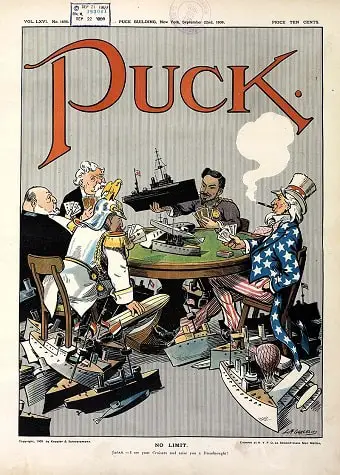
U.S magazine Puck shows 1909 US, Germany, Britain, France, and Japan engaged in a “no limit” race game
Japan participated in the war with the Allied powers. It had a great navy and played essential roles in securing sea lanes.
It had enforced 6,095,000 people that were a part of the Imperial Armed forces. These forces used heavy machine guns, revolvers, and rifles. Japan took over German islands in the Pacific.
Despite its first large-scale battle, Japan played a significant role in World War 1.
Conclusion
The Great war marked its end on November 11, 1918, A.D. This war was regarded as the “war to end all wars.”
The Versailles Treaty signed on June 28, 1919 A.D. in the Hall of Mirrors in the Palace of Versailles officially marked the end of world war 1.
It accused Germany of significant destruction that war had led to, which eventually laid the groundwork for World War 2. This war shattered the world into rugs that took quite a time to overcome the losses.
The leaders believed World War 1 was unavoidable. However, if the events following the assassination of the Austrian heir were pondered upon well, it could have prevented such calamitous bloodshed.
